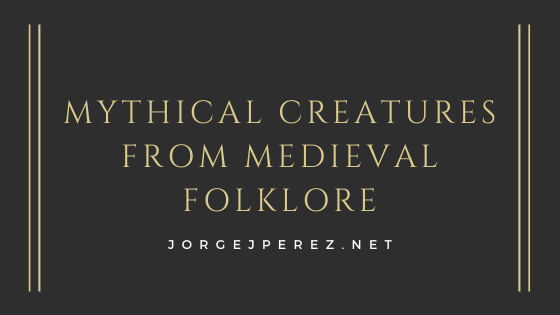Mythical creatures have played a part in storytelling since words were first exchanged around campfires. While people have changed and fluctuated through time, there are many creatures that survived the generations and are still known today. Medieval folklore specifically has many terrifying creatures with lessons to share with anyone brave enough to listen.
Ogre
Starting with a familiar figure, ogres are still seen in popular culture today, from movies to video games. They are often intimidating in size and ugly in appearance, stomping around destroying the puny humans underfoot. In the olden days, they were often shown eating human flesh as a warning against the very real threat of cannibals.
Manticore
Similar to a sphinx, this Persian monster was noted to have a human head, lion body, and the tail of a dragon or potentially a scorpion. Medieval storytellers often equated the manticore to the devil. With its deadly tail and taste for human flesh, the manticore was a terrifying adversary.
Basilisk
Known as the king of serpents, storytellers often listed the endless ways this creature could kill you, from its bite to its cold stare. Unlike other time periods, the medieval basilisk was a mix of serpent and chicken, with the body of a snake, but the head, feet, and wings of a chicken. While this form of a basilisk may not sound as intimidating, with its ability to kill just by scent alone, it was known to be a deadly threat to all who crossed it.
Mermaid
In movies like Pirates of the Caribbean and Peter Pan, mermaids are often seen as jealous, petty creatures that look like human women except for the long tail. In medieval history, mermaids had similar characteristics but were often seen as downright evil. With the oldest tale of mermaids originating from the Assyrian Empire, mermaids were often beautiful and cold-hearted, convincing men and sailors to give up their lives and their souls.
Pard
Known for being large cats with spotted coats, pards were believed to be able to kill prey with a single jump. Leopards were thought to be the incestuous offspring of a pard and a lion.
Sea Monk
Described as half-fish, half-human – or monk to be precise – this aptly-named mythical creature was “discovered” in the waters off the coast of Denmark in the 16th century. Though many speculate it was actually a seal or fish, it quickly became a legend in Europe. It was so intriguing, in fact, that researchers and naturalists have continued to debate its existence into modern times.
Wyvern
While tales of dragons have circulated in cultures across the globe since antiquity, stories of the wyvern seem more closely tied to medieval Europe than anywhere else. Although similar in appearance to dragons, wyverns are smaller, have only two legs, and rarely breathe fire. Like their larger cousins, they can fly, and their breath remains dangerous: Wyverns are said to breathe infectious disease and were often blamed for the Black Plague in Europe.
Elves
Made famous in fairy tales and legends throughout the region, elves are depicted as human-like beings, though with vastly differing physiques. Elves are smaller in stature than humans and are known for causing humans strife in the form of disease, bad dreams, stolen children, or illicit affairs.
Whatever their true origin, it is clear that medieval Europe’s mythical creatures hold a significant place in legendary history. The intrigue of these creatures remains strong today, inspiring research, fiction, television, and film.

